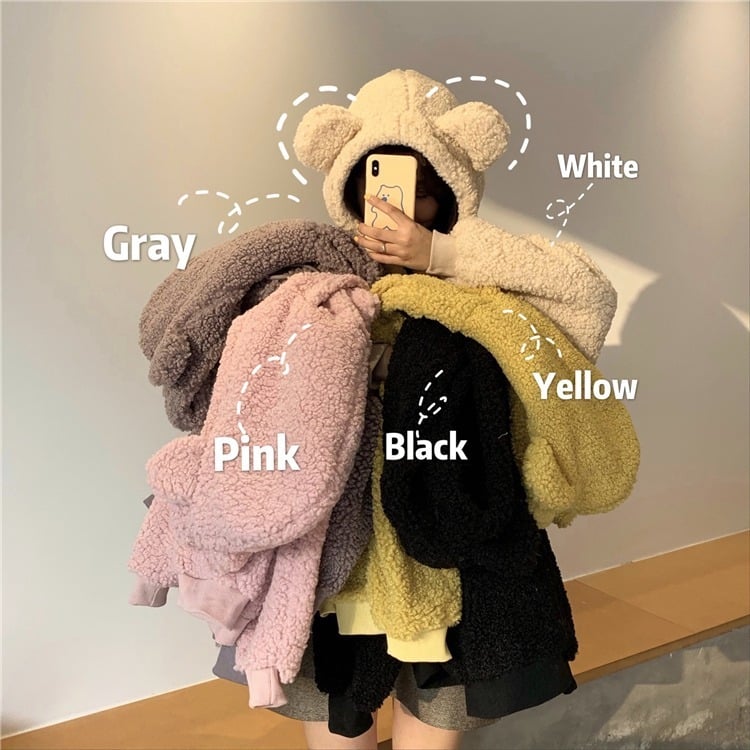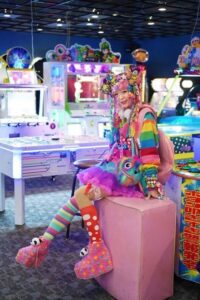What is Kawaii? Kawaii Meaning & Kawaii Style
- Everything Kawaii
- April 25, 2024
- Kawaii Peach
Hey there, kawaii curious people! Get ready to dive into the charming world of all things cute and cuddly. In this article, we’ll be exploring the meaning of kawaii in Japanese culture, as well as delving into kawaii style, kawaii fashion, kawaii art, and much much more.
So, buckle up and prepare to be enchanted by the irresistible allure of kawaii! Let’s answer to the question “What is Kawaii?”!



In this article, we’ll not only explore the essence of kawaii in Japanese culture but also shed light on the differences between kawaii, kowai, and kawai. But first what is kawaii?
What is Kawaii in a Few Words
Kawaii, originating from the Japanese word for “cute,” isn’t merely a style or trend—it’s a cultural phenomenon. It encompasses a celebration of all things endearing, innocent, and sweet, whether they’re inanimate objects, humans, or non-humans.
From charming characters like Hello Kitty and Pikachu to the delicate strokes of cute handwriting, kawaii permeates various aspects of Japanese culture, including manga, anime, and everyday life.
This culture of cuteness, known as the kawaii aesthetic, has evolved into a prominent feature of Japanese popular culture, influencing entertainment, fashion, food, toys, personal appearance, and mannerisms.
What began in Japan has now captured hearts worldwide, with kawaii’s appeal transcending borders and embraced by people of all ages and backgrounds. Whether it’s through adorable fashion accessories, plush toys, or whimsical home decor, the kawaii influence can be felt across the globe, spreading joy and sweetness wherever it goes.
Now let’s find out what is kawaii in japanese exactly. But, is Kawaii Japanese?

Is Kawaii Japanese: Kawaii Meaning
Yes Kawaii is Japanese. Kawaii (Japanese: かわいい or 可愛い, IPA: [kawaiꜜi]) is a term that translates to ‘lovely’, ‘loveable’, ‘cute’, or ‘adorable’ in English from Japanese. It embodies the culture of cuteness in Japan, celebrating everything sweet, charming, and endearing.
The term kawaii finds its origins in the phrase 顔映し (kao hayushi), which translates to “(one’s) face (is) aglow.” Originally used to describe blushing or flushing of the face, it evolved to signify a broader sense of loveliness and charm. The concept of kawaii emerged during Japan’s post-World War II period, characterized by rapid economic development and an increasing influence of Western culture. As Japan underwent modernization, there was a notable embrace of youthful and playful elements, paving the way for the rise of the kawaii aesthetic.

What is the Kawaii Style?
So, what is the kawaii style? The kawaii style isn’t just confined to one aspect of life—it’s everywhere, from the clothes we wear to the food we eat, and even in the way we live and express our personalities. At its core, kawaii style embodies a playful, childlike quality that infuses everything with color and whimsy.
This playfulness is evident in the vibrant designs and cheerful motifs that characterize kawaii fashion, accessories, and everyday items.
But being kawaii isn’t just about being playful—it’s also about embracing innocence and purity. Many kawaii items are designed to evoke feelings of childlike wonder and simplicity, often using soft pastel colors and straightforward designs to achieve this effect. It’s like tapping into a world where everything is pure and untouched by the complexities of adulthood.
Of course, the cornerstone of kawaii style is cuteness itself. Whether it’s through adorable animal characters, round and soft shapes, or those trademark large, expressive eyes, kawaii is all about celebrating the irresistibly cute. It’s like wrapping yourself in a cocoon of sweetness and charm, where even the simplest of things can bring a smile to your face.
So, whether you’re rocking a kawaii-inspired outfit, indulging in cute-themed snacks, or simply surrounding yourself with adorable trinkets, the kawaii style is all about embracing the whimsical and bringing a little bit of magic into your life.
However, you should know that there are many different types of kawaii styles like the Yume Kawaii Style.


What is the Kawaii Aesthetic?
So what it the kawaii aesthetic? The kawaii aesthetic, while present in various aspects of life, is primarily associated with fashion and lifestyle. Rooted in celebrating cuteness and charm, it brings playfulness, innocence, and a sense of joy to everyday experiences.


What is Kawaii Fashion?
So, what is kawaii fashion? Kawaii fashion is a style that embraces cuteness, playfulness, and whimsy in clothing and accessories. It often features pastel colors, adorable motifs like hearts and animals, and exaggerated proportions to create a youthful and charming look.
Ruffles, bows, and lace are common elements in kawaii fashion, adding to its sweet and innocent appeal. Kawaii accessories play a significant role in completing the kawaii look, with items such as colorful hair clips, quirky bags, and cute jewelry serving as playful accents.
Kawaii fashion allows individuals to express their love for all things cute and charming, embracing a carefree and joyful approach to dressing up kawaii.

What is Kawaii Art?
Kawaii art is an artistic expression that embodies the essence of cuteness and charm. It features adorable characters, whimsical motifs, and vibrant colors to evoke feelings of joy and innocence. Kawaii art often includes cute animals, happy faces, and playful scenes, drawing inspiration from Japanese pop culture, manga, and anime.
Kawaii Artists use a variety of mediums, including digital illustration, traditional painting, and sculpture, to create kawaii artwork. Whether it’s through cute illustrations, charming character designs, or delightful animations, kawaii art captivates audiences with its cheerful and lighthearted aesthetic.

Kawai VS Kawaii
In the realm of Japanese language, a slight difference in pronunciation or spelling can lead to entirely different meanings. Take, for instance, the case of “Kawai” and “Kawaii.”
“Kawaii,” as most of us know, means “cute” or “nice” and is a beloved term, especially among the younger generation in Japan. However, its counterpart, “Kawai,” takes on a completely different meaning. This word translates to “dry” and is commonly used when expressing thirst, such as in the phrase “nodo ga kowai desu,” which literally means “my throat is dry.”
But the plot thickens! “Kawai” isn’t just about quenching your thirst; it’s also the name of a renowned brand in the world of musical instruments. Known for its exceptional craftsmanship and quality, Kawai instruments are celebrated by musicians worldwide for their precision and performance.
So, next time you’re in Japan, remember the subtle yet significant difference between “Kawai” and “Kawaii.” While one might leave you reaching for a glass of water, the other could have you strumming the strings of a beautifully crafted Kawai instrument.
Kawaii VS Kowai
In Japanese, the distinction between “Kawaii” and “Kowai” is crucial, as they represent opposite ends of the emotional spectrum.
“Kawaii,” as we’ve explored, embodies cuteness and charm, evoking feelings of warmth and affection. It’s the word you’d use when you spot something adorable, like a fluffy kitten or a smiling cartoon character.
On the flip side, there’s “Kowai,” which means “dreadful” or “scary.” It’s the word you’d utter when faced with something frightening or terrifying, whether it’s a spooky ghost story or a hair-raising horror movie.
So, while “Kawaii” fills us with delight and joy, “Kowai” sends shivers down our spines, reminding us of the thrilling sensation of fear. In Japanese culture, understanding the distinction between these two words is essential for navigating the emotional landscape and expressing a wide range of sentiments.


Conclusion
Our exploration into the world of kawaii has uncovered a rich tapestry of meanings and expressions. “Kawaii,” meaning cute or nice, has become a global phenomenon, celebrated for its charm and innocence. However, it’s essential to recognize the subtle difference between “Kawaii” and “Kowai,” which evoke contrasting emotions of joy and fear, respectively.
In kawaii culture, adorable characters, whimsical fashion, and playful art come together to create a world of delight and creativity. Through our journey, we’ve also encountered unexpected connections, such as the dual meanings of “Kawai” and its association with a renowned musical instrument brand.
In essence, kawaii culture reminds us to find joy in the simplest of things and appreciate the beauty that surrounds us. Whether it’s through cute characters, charming fashion, or delightful art, kawaii invites us to embrace creativity and sweetness in our lives.
For a better understanding of what is kawaii you can check out social media accounts with the kawaii aesthetic like the Kawaii Peach instagram account.
Read the different types of kawaii style next or something about another popular style Kpop Fashion outfit ideas, which originates not from Japan but from South Korea.


